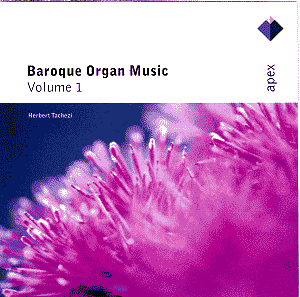This CD is a reissue
of recordings which were made in the
late 1960s and early 1980s. It is not
indicated which parts of this recording
are from 1968, but I assume the performances
at the organ of the Stiftsbasilika Klosterneuburg
are the earliest. These recordings have
quite a lot of noise, and there is a
clear difference in the style of playing
by Herbert Tachezi as well, in comparison
with the performances from the early
1980s.
It is a shame the booklet
isn’t very informative. It gives only
very sparing information about the composers,
hardly any about the music and none
at all about the organs.
I couldn’t find any
information about the organ in Ossiach,
apart from the fact that it dates from
the early 18th century. But I have no
idea to what extent it is still in the
condition of the time it was built.
The organ in Klosterneuburg
is from the 17th century: in 1642 the
young organ builder Johannes Freundt
completed the construction of the organ.
In the next centuries several times
adaptations took place, but fortunately
these were only minor. In 1942 a complete
restoration should have taken place,
but the war made that impossible. The
action was moved to Vienna to be repaired,
but was destroyed in a bombing attack.
After the war the political situation
made it very difficult to restore the
organ to its original glory. It wasn’t
until 1983 that a complete restoration
according to historical principles could
be performed.
The recording by Herbert
Tachezi was made before the restoration,
which is probably one of the reasons
it is rather unsatisfactory. One wonders
whether it was a good idea to reissue
these recordings, in particular since
others have been made since 1983 which
show the organ in its full restored
glory.
The programme doesn’t
contain many surprises: most pieces
are regularly recorded, and in particular
the compositions played on the organ
in Klosterneuburg are certainly recorded
in better interpretations. The performance
of this part of the programme is rather
old-fashioned, with predominantly legato
playing, and in the Toccata and the
Fugue by Pachelbel as well as Fischer’s
Prelude and Fugue a pretty heavy registration
makes it difficult to hear any details.
Some of the pieces – for example Froberger’s
Ricercare in g minor – have several
sections, but there is too little differentiation
between them in Herbert Tachezi’s performance.
The programme is interesting
nevertheless. Most composers in some
way or another, directly on indirectly,
are under the influence of Frescobaldi.
Kerll studied in Rome, and although
he didn’t meet Frescobaldi, he will
certainly have heard his keyboard music.
Kerll did know Frescobaldi’s most important
German pupil, though: Johann Jakob Froberger,
who is rightly represented on this CD
as well. Kerll for his part influenced
Johann Pachelbel, although it isn’t
certain that he was Kerll’s pupil.
Like Pachelbel Johannes
Speth was from South Germany, and he
was also under Italian influence. He
uses thematic material from the Italian
keyboard composer Bernardo Pasquini.
Reminiscences of Pasquini’s works can
also be found in the Toccatas of Georg
Muffat, which he published in his ‘Apparatus
musico-organisticus’ (1690). In his
Foreword he also mentions Frescobaldi
as a forerunner.
Johann Caspar Ferdinand
Fischer is the youngest composer in
the programme. He was of Bohemian origin,
and like Muffat he strove for a ‘mixed
style’ of German, French and Italian
elements. He has become known mainly
for his ‘Ariadne musica’ of 1702, a
collection of 20 preludes and fugues
in different keys, which has influenced
Johann Sebastian Bach in his composing
of the ‘Wohltemperirte Clavier’.
Attractive as the programme
is this recording has too many shortcomings
to be recommended.
Johan van Veen

